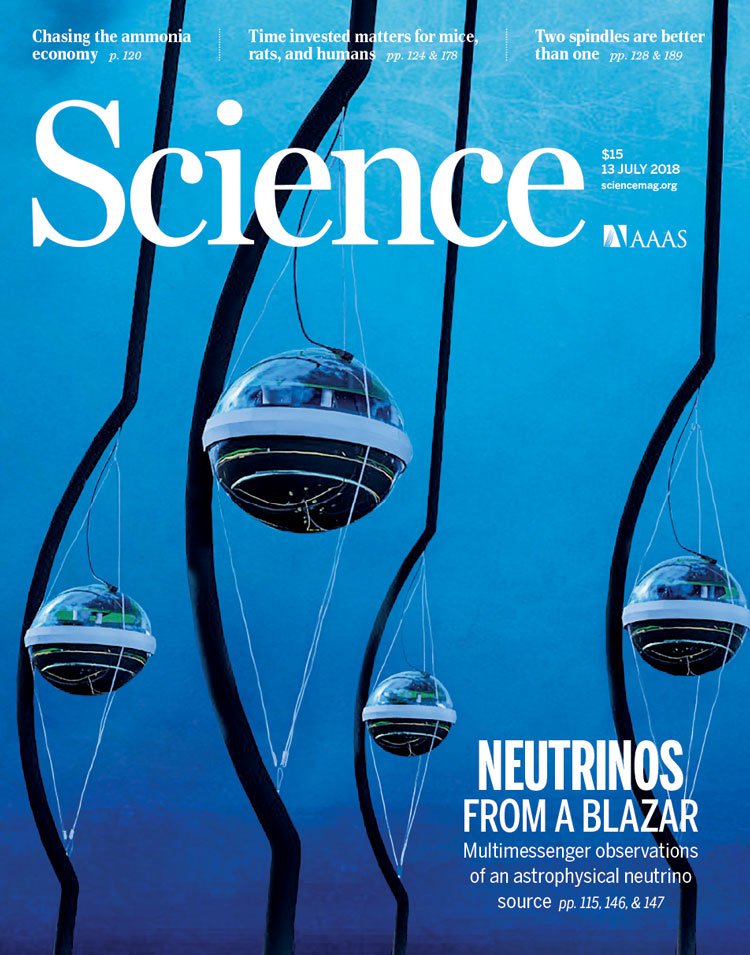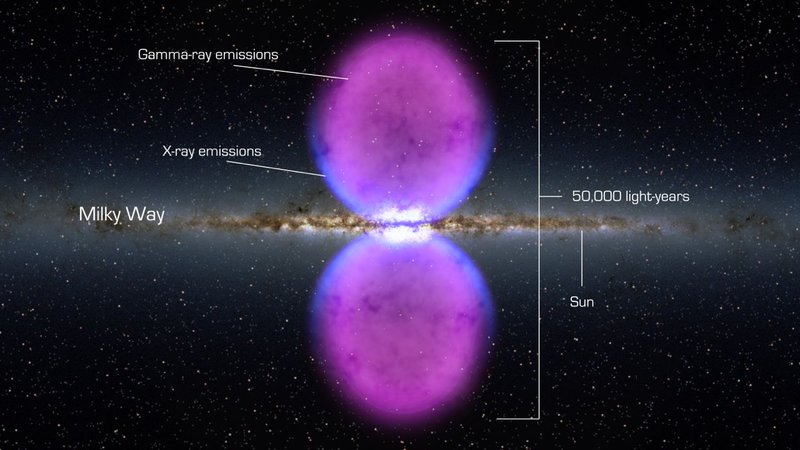Fermijev Teleskop
The Fermi Large Area Telescope (LAT), is the main instrument onboard the Fermi Gamma Ray Space Telescope spacecraft. Fermi was launched on 11 June 2008 and the mission was made possible by participation from NASA and the United States Department of Energy, and government agencies in France, Germany, Italy, Japan, and Sweden.
The LAT is measuring high energy gamma rays in the energy range from about 20 MeV to more than 300 GeV and it covers about 20% of the sky at any time and imaging the whole sky every three hours. Its data are public and actively used by the community (available at http://fermi.gsfc.nasa.gov/ssc/).
Among the biggest LAT discoveries are the giant Fermi bubbles emanating from the center of our galaxy (which are possibly related to the past activity of the MIlky Ways super massive black hole, shown at the figure below), discovery of more than an order of magnitude more sources than were known before the LAT was launched (about 2000 active galactic nuclei and of more than 150 pulsars). It also provided one of the most stringent probes into the nature of dark matter particles.
More recently it became instrumental to the field of the multi-messenger astronomy. For example, it made possible identification of the source of high energy neutrino, which was identified to be a flairing blazar (class of active galactic) detected by the Fermi LAT (the result became a cover page of the prestigious journal Science, shown on the right). For the overview of main discoveries see http://www.nasa.gov/mission_pages/GLAST/main/ and http://fermi.gsfc.nasa.gov/science/.

UNG staff member Prof. Dr. G. Zaharijas has been a member of the LAT collaboration since the launch of the satellite in 2008. She works mainly on the search for feeble signals of dark matter annihilation or decay in the LAT data and in 2018/19 was a coordinator of the Dark Matter and New Physics working group within the LAT.

